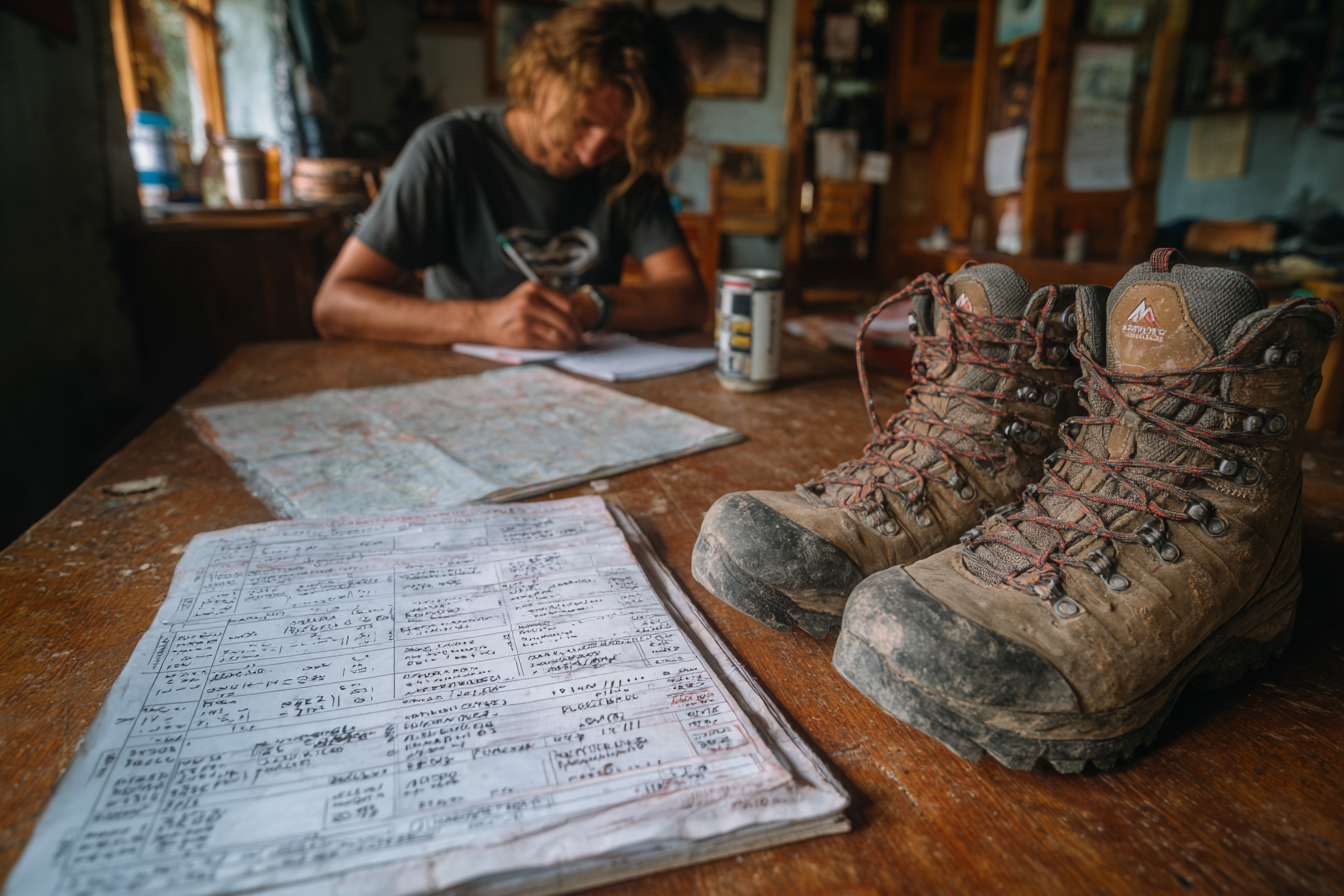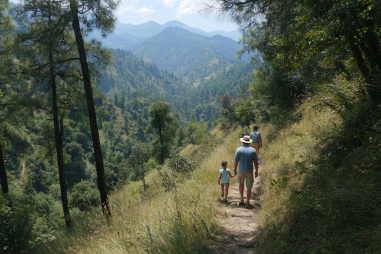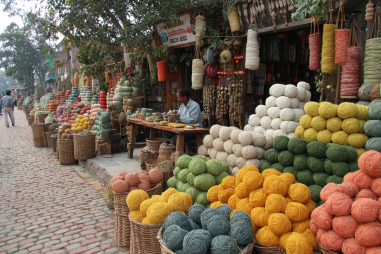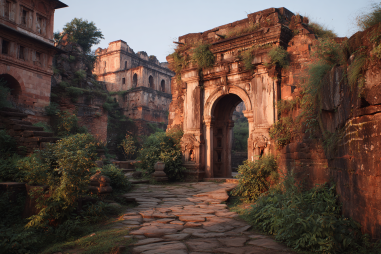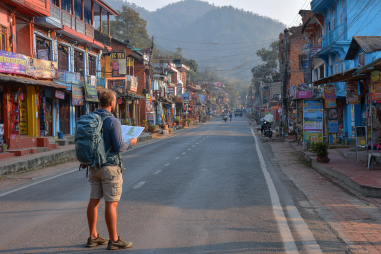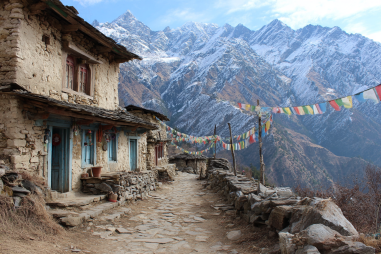Embarking on the Everest Base Camp trek is a dream adventure for many, offering breathtaking views and a chance to experience the majestic Himalayas up close. However, before setting out on this epic journey, one of the most important steps is to plan your budget carefully. Understanding the various costs involved will help you prepare financially and avoid surprises along the way. From permits and flights to accommodation and guide services, this article will walk you through all the typical expenses, providing practical tips to make your Everest Base Camp trek both memorable and financially manageable.
Understanding Mandatory Permits and Fees
One of the first costs to consider when budgeting for the Everest Base Camp trek is the mandatory permits. You cannot start this trek without securing the appropriate permissions issued by the Nepalese government. The two main permits you need are:
- TIMS Card (Trekkers’ Information Management System): This card is essential for all trekkers entering the Sagarmatha National Park region. It usually costs around $20 for individual trekkers and is issued to track and ensure the safety of visitors.
- Sagarmatha National Park Permit: This permit grants you access to the national park, including the Everest Base Camp area. It costs around $30 and serves to preserve the protected area.
These fees may seem small compared to overall expenses but factor them in early. Keep in mind that these permits are typically paid for in Nepalese Rupees (NPR), so consider exchange rates and any service charges your trekking agency might add if you purchase through them.
Accommodation and Food Costs Along the Trail
Accommodation during the trek consists mostly of tea houses—basic lodges that offer rooms, meals, and a chance to rest. Prices for accommodation vary depending on the location and season. In the lower villages, rooms might cost about $5 to $10 per night, while in higher altitudes near Everest Base Camp, expect to pay closer to $10 to $20 per night due to the difficulty in transporting supplies.
Food costs on the trek can add up comparatively fast. While the staples—such as dal bhat (lentil soup with rice), noodles, and momos (dumplings)—are reasonably priced, imported or western food items like pasta, bacon, or coffee tend to be more expensive. On average, budget about $5 to $10 per meal, depending on your preferences and the remoteness of the village. It’s wise to eat well at every stop to maintain your energy levels during the strenuous trek.
Guide and Porter Service Expenses
Hiring a guide or a porter is not mandatory but highly recommended, especially for first-timers. Guides enhance your experience by sharing their knowledge of local culture, geography, and provide a vital safety net. Porters help by carrying your heavier bags, reducing your fatigue and risk of injury.
Costs for these services vary. A guide typically charges between $25 and $35 per day. Porters are usually paid $15 to $25 per day. Keep in mind that these rates can fluctuate depending on the season, your negotiating skills, and the inclusiveness of their services (such as food and accommodation). Additionally, you should budget a gratuity at the end of the trek; around 10-15% of the total fee is customary.
Gear Purchase Versus Rental Costs
Depending on what equipment you already own and your preferences, you will want to either purchase or rent trekking gear necessary for the trek. Essential gear includes sturdy hiking boots, warm clothing layers, a down jacket, sleeping bag, trekking poles, and a good daypack.
Purchasing gear can be costly upfront, ranging from $300 to $800 or more depending on the brand and quality. However, if you plan to trek multiple times or in various destinations, investing in your own gear might be worthwhile.
Alternatively, renting gear in Kathmandu or even Lukla is a budget-friendly option, with costs typically between $5 to $15 per day for each item. Be sure to check quality and fit before renting, as ill-fitting or poor gear can severely impact your trek experience.
Transportation to and from Lukla
The trek officially begins in Lukla, which is accessible only by air from Kathmandu. The round-trip flight between Kathmandu and Lukla is one of the most iconic but expensive parts of the journey. Expect to pay around $160 to $200 each way, although prices can fluctuate with the weather and demand.
Due to the tricky weather conditions, flights to Lukla are sometimes delayed or canceled, so plan your itinerary with buffer days to avoid stress and additional costs. In addition to flights, consider transportation within Kathmandu to and from the airport, which is typically affordable via taxi or shuttle services.
Insurance and Emergency Funds
Having travel insurance is crucial for any Everest Base Camp trekker. Comprehensive coverage should include high-altitude trekking, emergency evacuation, medical treatment, trip cancellation, and gear loss or theft. Insurance policies can vary in cost but expect to spend anywhere from $100 to $300 depending on the provider and coverage limits.
Additionally, setting aside emergency funds is smart. Altitude sickness, injuries, or extreme weather conditions can require unexpected expenses such as helicopter evacuations, which can cost several thousand dollars. Having a financial cushion will give you peace of mind throughout your adventure.
Tips on Saving Money Without Compromising Safety
While it’s tempting to cut corners to save money on the Everest Base Camp trek, safety and comfort should never be compromised. Here are some practical ways to keep costs down while still enjoying a secure trek:
- Book flights early: Secure your Kathmandu-Lukla flights in advance to get better rates.
- Choose tea houses wisely: Some villages offer a range of accommodation; seek cost-effective options with good reviews.
- Rent gear selectively: Rent bulky or expensive items you only need for the trek, like sleeping bags, instead of buying.
- Hire local guides and porters: Support local communities and negotiate fair prices.
- Stick to dal bhat: Eating the traditional meal daily saves money and fuels your trek effectively.
- Travel in the shoulder season: Consider trekking in the pre-monsoon or post-monsoon months to save on flights and accommodation.
Sample Budget Breakdown for the Everest Base Camp Trek
To give you a clearer picture, here’s a sample budget for a moderate trek length of 14 days based on mid-range choices:
- Permits: $50
- Flights (Kathmandu-Lukla-Kathmandu): $360
- Accommodation (Tea houses): $10 per night × 13 nights = $130
- Food: $15 per day × 14 days = $210
- Guide and porter services: $35 + $20 per day × 14 days = $770
- Gear rental: $10 per day × 14 days = $140
- Insurance: $200
- Miscellaneous/Emergency funds: $100
Total Estimated Cost: $1,960
This amount can vary widely depending on your choices, season, and currency exchange rates. Budget travelers who camp or self-guide can reduce costs, while luxury trekkers may spend significantly more.
Preparing Financially for Your Everest Experience
Successfully budgeting for your Everest Base Camp trek is about balancing your adventure goals with practical financial planning. By understanding each cost element—from permits and flights to daily expenses and unforeseen emergencies—you can allocate your funds wisely and enjoy your trek without financial stress. Whether you choose to splurge a little for added comfort or travel frugally, the incredible experience of standing at the gateway to the world’s highest peak is priceless.

